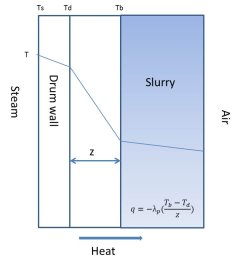
Project
Mild conductive drying of foods
PhD defended by Jun Qiu at Wageningen University on 17 April 2019
Introduction
Drying is a commonly used food processing unit operation, which can preserve food products, increase their shelf life and maybe reduce the transport cost, by reducing the moisture content and microbiological activity and/or product volumes. On the other hand, drying is an energy-intensive process, consuming 10-15% of the total energy consumption in industries. Indeed, indirect thin film drying has been considered as an attractive drying technology to food companies, due to its high energy efficiency, for example it consumes on average 40% less energy comparing to spray drying.Unfortunately, the functionality of the dried powders is still a bottleneck and the reported functionality loss after drying is not understood. Functionality changes occur due to interactions between product and process and are strongly related to the nature of the formulation (e.g. presence of proteins, carbohydrates). Indeed, this limits the food companies to switch to the more energy efficient thin film drying methods.
Aim
This project aims at developing knowledge-based guidelines for thin filmdrying of selected food categories. This can be achieved by investigating film drying at the product scale and development of transient thin film drying models that predict drying behaviour as function of drying conditions and technology. Additionally, a systematic comparison of thin film drying technologies will be conducted, via carrying out pilot scale experiments and subjecting powders to extensive analysis.
Approach
A small scale device will be developed to mimic large-scale film drying by allowing thin film drying under conditions. Furthermore, mass & heat transfer and kinetic models will be set up and validated against experimental data. Since product formulation has considerable effects on thin film drying behaviour, a model system will be selected that can be varied in composition to reflect different product categories. A fundamental insight on the thin film drying behaviour will be obtained. Besides, pilot experiments, followed by the subsequent powder analysis will be performed, in order to build a systematic comparison between the three selected film drying technologies, namely drum drying, agitated thin film drying and refractance window drying. This comprises the comparison on product functionality, energy and cost. This project is embedded in the ISPT Drying and Dewatering Cluster and research partners are amongst others Unilever, Bodec, ILVO and ECN.
